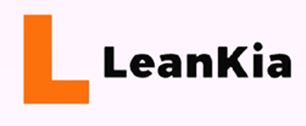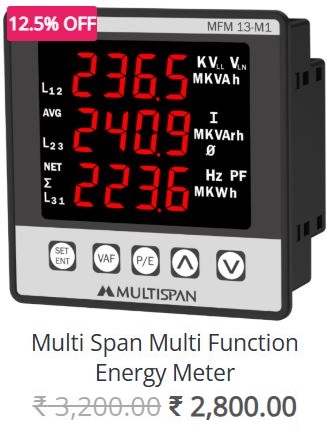In the fast-paced world of manufacturing, ensuring high-quality products while maintaining efficiency is paramount. To achieve this, manufacturers rely on a set of fundamental tools that help monitor, analyze, and improve processes. These tools, known as the “7 Basic Quality Tools,” are essential for solving problems, enhancing processes, and ensuring the overall quality of products.
In this blog, we will dive into these seven tools and explore their applications in the manufacturing industry. By using these tools, manufacturers can improve production quality, reduce waste, and streamline operations.
What Are the 7 Basic Quality Tools?
The 7 Basic Quality Tools were first introduced by Kaoru Ishikawa, a Japanese quality management expert, in the 1960s. These tools are simple, yet powerful techniques that help identify problems, analyze data, and drive continuous improvement in manufacturing processes. The tools are:
- Cause-and-Effect Diagram (Fishbone Diagram)
- Check Sheet
- Control Chart
- Histogram
- Pareto Chart
- Scatter Diagram
- Flowchart
Let’s explore each of these tools in detail and discuss how they can be applied in manufacturing environments.
1. Cause-and-Effect Diagram (Fishbone Diagram)
The Cause-and-Effect Diagram, also known as the Fishbone Diagram or Ishikawa Diagram, is used to identify the root causes of problems in a process. It helps visualize the relationship between a problem (the “effect”) and all possible contributing factors (the “causes”).
Application in Manufacturing:
In manufacturing, this tool is useful when quality issues arise, such as defects in products or delays in production. For example, if there is a recurring defect in a product, the Fishbone Diagram can help identify whether the problem stems from equipment issues, material quality, human error, or other factors.
Steps to Use:
- Define the problem (effect).
- Draw the main branches representing categories of causes (e.g., machines, materials, methods, people).
- Brainstorm potential causes and add them as sub-branches under each category.
- Analyze the diagram to pinpoint the root cause of the issue.
2. Check Sheet
A Check Sheet is a simple data collection tool used to track the frequency of specific events or occurrences. It is essentially a structured form for recording observations and helps in organizing data in a way that highlights patterns or trends.
Application in Manufacturing:
Manufacturers can use check sheets to monitor various aspects of production, such as the frequency of machine breakdowns, the number of defective items produced, or the occurrence of process deviations. This tool is particularly helpful in quality control and monitoring production line performance.
Steps to Use:
- Define what data needs to be collected (e.g., defects, equipment downtime).
- Design a simple form with checkboxes or spaces to record occurrences.
- Collect data over a set period.
- Analyze the data to identify trends or areas for improvement.
3. Control Chart
A Control Chart is a graphical tool used to monitor and control a process over time. It shows the variation in data and helps determine whether the process is stable (in control) or if corrective actions are needed. Control charts display data points against upper and lower control limits to assess the consistency of a process.
Application in Manufacturing:
Control charts are particularly valuable for monitoring critical process variables such as temperature, pressure, or product dimensions during production. By using control charts, manufacturers can identify when processes go out of control and take corrective action before defects occur.
Steps to Use:
- Collect data on the process variable you want to monitor (e.g., part dimensions).
- Plot the data on the control chart.
- Set control limits (upper and lower) based on historical data.
- Monitor the chart over time to see if the process remains within control limits.
4. Histogram
A Histogram is a bar chart that represents the distribution of data points across different ranges or intervals. It visually shows the frequency of different outcomes in a dataset, helping to identify patterns, variations, or abnormalities in the data.
Application in Manufacturing:
Histograms are used to analyze the distribution of production characteristics, such as the size or weight of products. By identifying patterns in data, manufacturers can determine whether the production process is consistent or if there are significant deviations that need to be addressed.
Steps to Use:
- Collect the data you want to analyze (e.g., product dimensions).
- Group the data into intervals (bins).
- Plot the frequency of data points within each interval on the histogram.
- Analyze the shape of the histogram to identify patterns, such as normal distribution or skewed data.
5. Pareto Chart
A Pareto Chart is a bar graph that represents data in descending order of frequency. It is based on the Pareto Principle (80/20 rule), which suggests that 80% of problems often come from 20% of the causes. This tool helps identify the most significant factors contributing to a problem.
Application in Manufacturing:
In manufacturing, Pareto charts are used to identify the most common causes of defects or inefficiencies. For example, if there are several types of defects, the Pareto chart can help prioritize which defects contribute most to the overall problem, allowing manufacturers to focus on addressing the most critical issues first.
Steps to Use:
- Identify the problem and collect relevant data (e.g., types of defects).
- Sort the data by frequency, from highest to lowest.
- Create a bar chart with categories on the x-axis and frequency on the y-axis.
- Analyze the chart to determine which categories represent the majority of issues.
6. Scatter Diagram
A Scatter Diagram is a graphical representation that shows the relationship between two variables. It is used to determine whether there is a correlation between the variables, such as between production speed and product quality.
Application in Manufacturing:
In manufacturing, scatter diagrams are useful for identifying relationships between different process variables. For example, a scatter plot could be used to analyze whether a change in machine speed affects the number of defective items produced.
Steps to Use:
- Collect data on two variables (e.g., machine speed and defect rate).
- Plot the data points on a scatter plot with one variable on the x-axis and the other on the y-axis.
- Analyze the plot to identify any patterns or correlations.
7. Flowchart
A Flowchart is a diagram that visually represents the steps in a process. It is a valuable tool for mapping out complex processes, identifying inefficiencies, and ensuring that all steps are followed in the correct sequence.
Application in Manufacturing:
Flowcharts are commonly used to document manufacturing processes, such as assembly lines or quality control procedures. By creating flowcharts, manufacturers can ensure that all steps in a process are clearly defined and that potential bottlenecks or inefficiencies are identified.
Steps to Use:
- List all the steps in the process.
- Create a flowchart using symbols to represent each step (e.g., ovals for start/end, rectangles for actions).
- Analyze the flowchart to identify any process improvements or areas of concern.
Conclusion
The 7 Basic Quality Tools are indispensable in the world of manufacturing. They provide a simple, effective way to identify, analyze, and solve problems that can affect product quality, process efficiency, and overall performance. By applying these tools, manufacturers can improve product quality, reduce defects, and increase operational efficiency. Whether you’re addressing a recurring defect, streamlining a complex process, or monitoring quality over time, these tools are essential for continuous improvement and maintaining high standards in the manufacturing industry.














